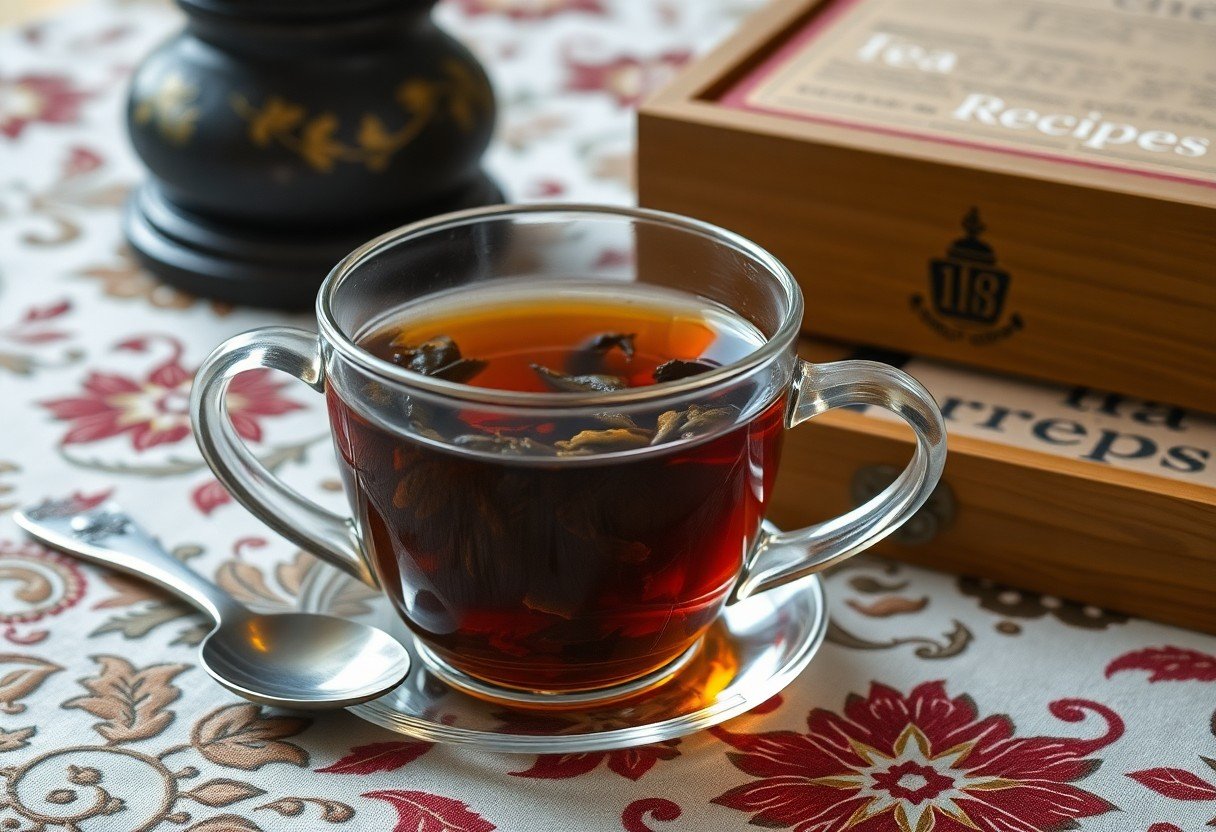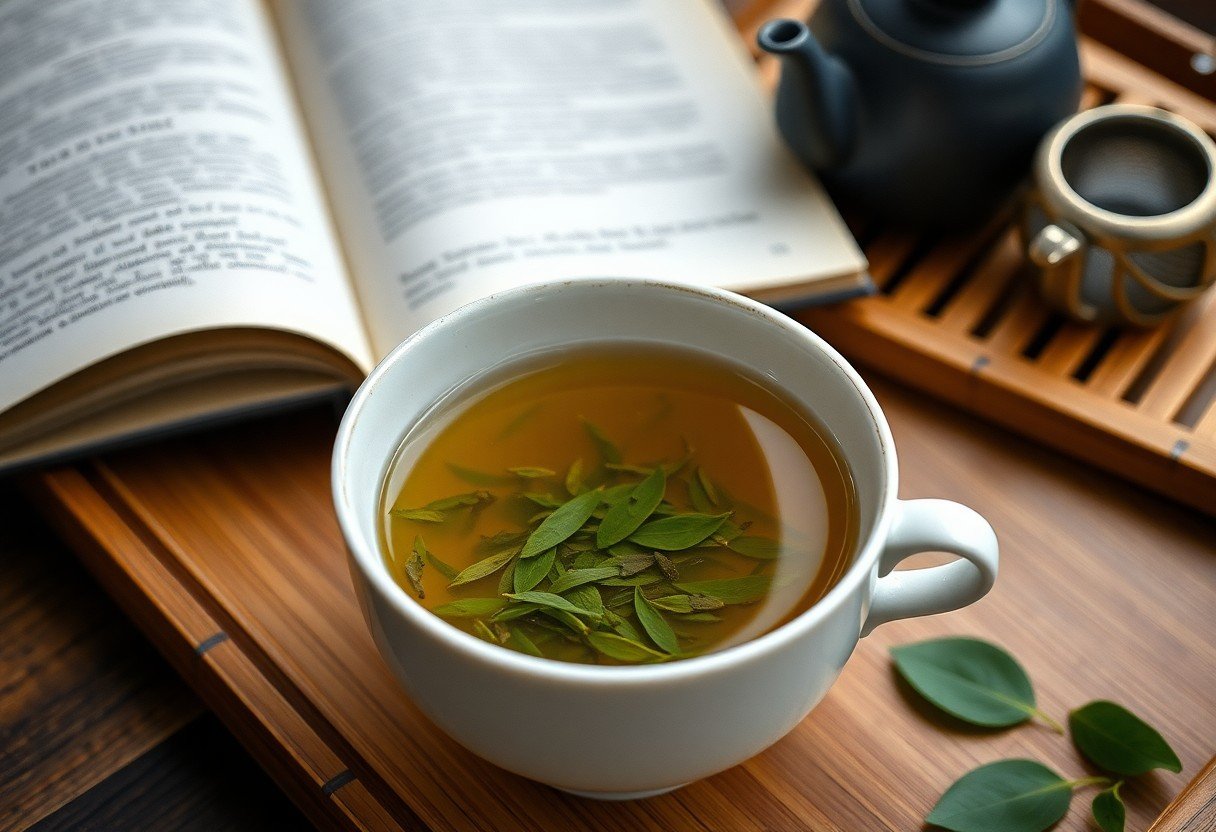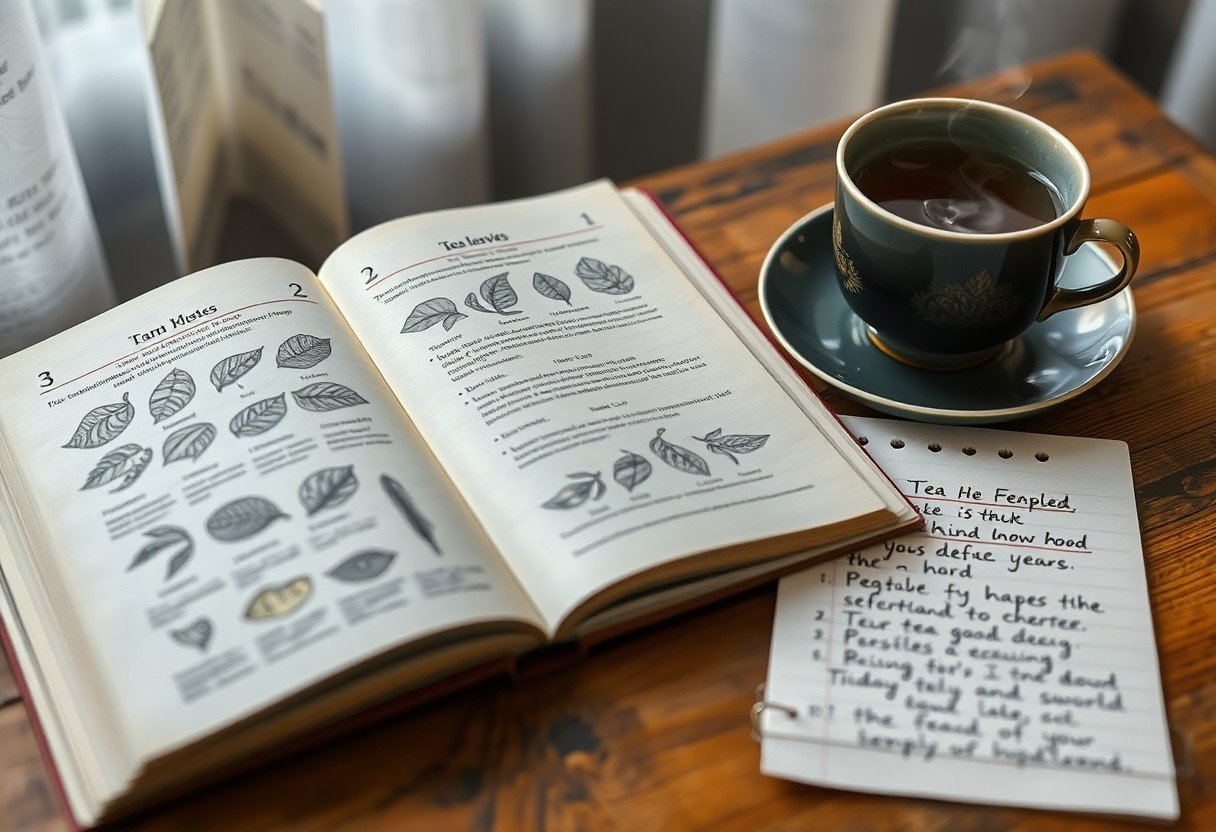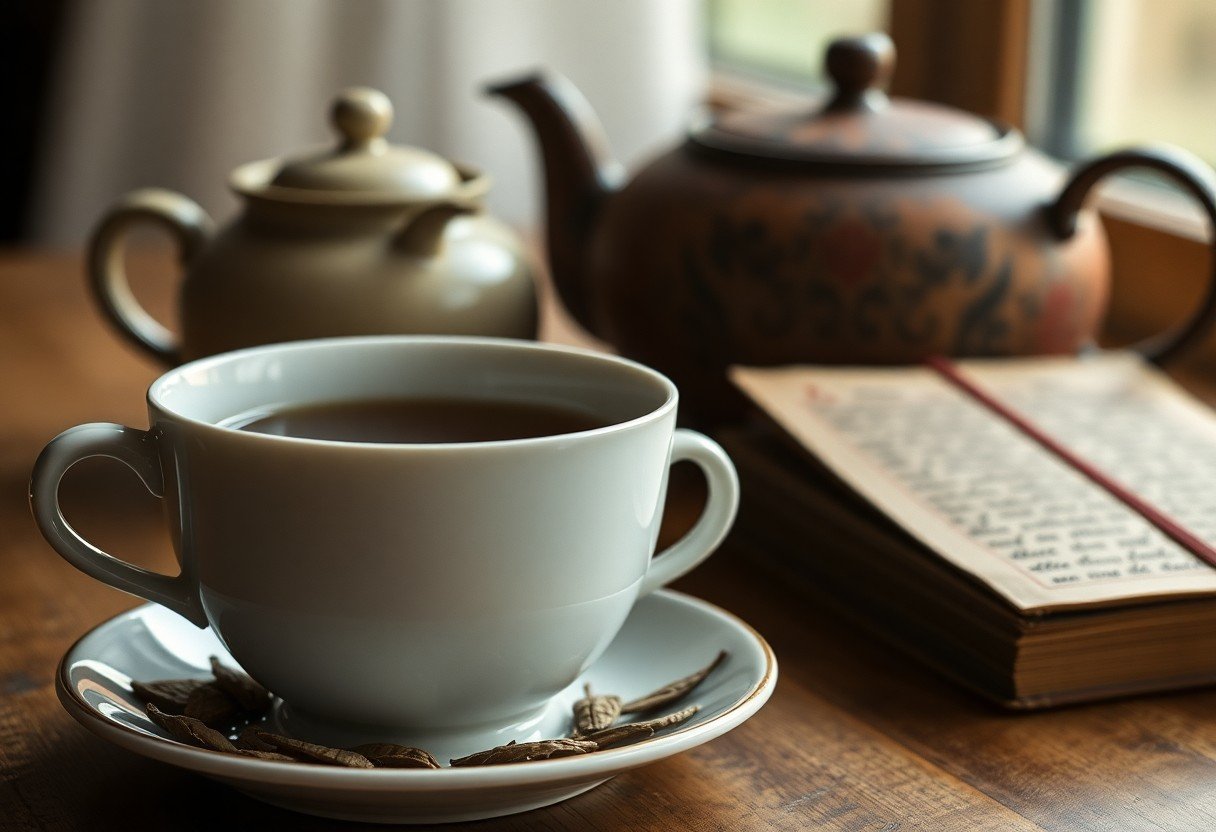The art of tea leaf reading.
It’s fascinating that a tea leaf reading can reveal hidden messages about your life’s journey. This ancient practice, known as tasseography, invites you to explore the patterns left in your tea cup, helping you gain insights into your emotions, decisions, and even your future.
By learning the art of interpreting these symbols, you can enhance your self-awareness and guide yourself toward a more fulfilling life. Join us as we examine the methods and meanings behind this intriguing tradition, and unlock the secrets that lie within your teacup.
Key Takeaways of tea leaf reading:
- Tea leaf reading, or tasseography, involves interpreting the patterns and shapes formed by the tea leaves left in the cup, revealing insights into one’s life journey.
- Choose a quiet and relaxed environment to enhance focus and intuitiveness during the reading process, allowing for deeper connections with the symbols presented.
- Common symbols include animals, shapes, and letters, each representing different aspects of life, such as relationships, career, and personal growth; familiarize yourself with these meanings.
- Use your intuition as a guide; the personal significance of a symbol may vary for each individual, so trust your instincts when interpreting the tea leaves.
- Practice regularly to improve your reading skills, as with any form of divination; combine observations with journaling to track messages over time for greater self-awareness.

The Ancient Art of Tea Leaf Reading : A Cultural Perspective
Historical Roots and Traditions
The practice of tea leaf reading, or tasseography, dates back to ancient times, with roots in the traditions of the Chinese and later spreading to Europe. In China, the custom of enjoying tea traces back to the Shang dynasty around 1600–1046 BC, where tea was not only seen as a beverage but also considered a significant part of daily life and cultural rituals.
The concept of interpreting the remains of the tea at the bottom of the cup emerged as a way to seek guidance from the universe and to reflect on personal challenges. By the 17th century, tea leaf reading had made its way to European shores, gaining popularity among the aristocracy who sought spiritual insights over a relaxing cup of tea.
The tradition evolved in different regions, adapting to local beliefs and customs. In Britain, for instance, tea became a societal staple, and the practice of reading tea leaves became both an entertaining pastime and a form of divination, often performed during social gatherings. The allure of discovering fate and fortune through something as modest as spent tea leaves captivated the imagination and solidified the practice in popular culture. Whether merely a curious diversion or a serious spiritual practice, it flourished, leaving a lasting legacy that continues to pique interest today.
Symbolism and Interpretation of Tea Leaf Reading in Different Cultures
In various cultures around the world, tea leaf reading carries unique meanings and interpretations influenced by local symbols and folklore. For instance, in the Middle East, interpreters often emphasize the shapes and figures formed by clumps of tea leaves, associating them with significant events or changes in life’s path. Symbols such as animals or natural elements can signify different aspects of your life, such as love, health, or prosperity. Alternatively, cultures like the Celtic traditions might interpret the resulting patterns through a more geometric lens, considering the angles and directions they take as representations of different energies in your life.
In Asian traditions, symbolism can be especially rich. For example, a butterfly could imply transformation and freedom, while a circle might represent completion or new beginnings. Different colors of the leaves may also have varying interpretations; light hues could indicate positive experiences, while darker spots could signal challenges ahead. Each culture has its own set of symbols and meanings that enhance the complexity and depth of what you can discover from reading the leaves in your cup.
As you explore the art of reading tea leaves, it can be enlightening to consider how these cultural nuances affect your interpretation. Delving into the specific symbols present in the leaves may reveal personal connections to your heritage and beliefs. For instance, a particular shape that resonates with you might hold more significance when understood through the lens of your own cultural background, illustrating the deeply personal and subjective nature of tea leaf reading. Ultimately, engaging with tea leaves is not just a form of divination; it’s an invitation to connect with your inner self, cultural history, and the narratives that shape your life.

The Tea Leaf Reading Process: Steps to Transformation
Preparing Your Tea: The Choice of Leaves and Brew
Choosing the right tea leaves is fundamental to your reading experience. Loose leaf teas are often preferred over bagged options, as they provide more variety and leave behind unique patterns in the bottom of your cup. Popular choices like black tea, green tea, or even herbal brews can influence the messages you receive, each bringing its own characteristics. Opt for organic or high-quality sources to ensure that your intuition isn’t clouded by any artificial additives or flavors, increasing the clarity of your reading.
When preparing your tea, steep it in a white porcelain cup, as the light color helps reveal the patterns of the leaves afterward. Aim for a strong brew; you want leaves to settle at the bottom, which will create more intricate designs for interpretation. The heat and infusion of flavors contribute to a deeper connection as you sip, allowing your thoughts and energy to harmonize with the tea, setting the stage for your reading.
The Cup and the Interpretation: Tea Leaf Reading Patterns and Symbols
The moment you finish your tea, it’s time to examine the remnants left in your cup. As you turn it three times to the left, pour any excess liquid onto a saucer, leaving just enough to see the leaves. Look for shapes and patterns created by the leaves; these may resemble animals, objects, or even numbers that hold significance in your life. Each shape carries its own meaning, often drawing from centuries of tradition and symbolism. For instance, a heart can signify love, while a crescent moon might indicate transformation or introspection.
The unique designs and symbols are not limited to their traditional meanings; your personal interpretation is key. Be attentive to how these shapes resonate with your feelings and current life situations. Perhaps a swirl of leaves aligns with a recent challenge or decision, offering insights that provoke thought and reflection. The stories that unfold in your cup are deeply personal, so allow yourself to explore the connections between the visual patterns and your present circumstances.
Diving deeper into the interpretation process, you might find yourself noting recurring motifs in your readings. Creating a journal to document your tea leaf readings can help identify patterns and illuminate their meanings over time. You could find that certain symbols represent stages in your life or recurring themes that offer guidance—be it in your relationships, career, or personal growth. Recognizing these insights allows for introspection and clearer understanding of the energies at play in your life.
The Role of Intuition: Tuning into Personal Insight
As you engage with the tea leaf reading process, your intuition plays a pivotal role. Beyond the established meanings of shapes and symbols, trusting your gut feelings can reveal emotions or situations that may not be immediately visible. This personal insight can heighten your ability to connect the visual elements of the leaves to your life, enhancing the overall reading experience. Embrace the natural silence surrounding you during this time, as stillness helps you listen to both your thoughts and the messages from the tea.
Developing a rapport with your intuitive sense takes practice and patience. At first, your interpretations may feel uncertain, but over time, you’ll cultivate confidence as you learn to trust your instincts. You’ll start to recognize those “aha” moments when a symbol stands out, resonating with a thought or feeling you’ve been contemplating. The more you engage in this practice, the clearer your messages will become, guiding you towards personal transformation and understanding.
Decoding the Messages: Common Symbols and Their Meanings
Shapes and Figures: What They Reveal About Your Life
The shapes and figures formed by tea leaves can convey rich insights into your life’s journey. For instance, the presence of a heart shape might signify love or emotional fulfillment on the horizon, while a triangle could suggest creativity and growth. Individuals who notice crosses may interpret them as indicators of conflict or choice that must be made. Each shape tells a unique story that reflects your current circumstances and future possibilities, allowing you to navigate your path more effectively.
Additionally, observing whether the shapes are well-defined or muddled can also impact interpretation. Clear shapes often represent clarity and confidence in upcoming events, whereas obscure forms might suggest confusion or ambiguity in decision-making. By analyzing these figures, you can gain a deeper understanding of your internal landscape and recognize how your emotions shape your environment.
The Color of the Leaves: Emotional Resonance and Clarity
The color of the tea leaves can influence the message they carry, providing further context to your personal readings. Dark hues such as deep brown or black might symbolize seriousness or introspection, whereas lighter colors like yellow or green can suggest hope, positivity, and renewal. These emotional layers allow you to gauge not only the state of your external circumstances but also your internal feelings surrounding them, heightening the resonance of your interpretation.
A vivid spectrum of colors within the leaves can also indicate a range of possibilities. For example, hints of red could signal passion or urgency, while shades of blue might evoke tranquility or contemplation. By embracing the colors present in your tea leaves, you can uncover the emotional undercurrents driving your decisions and experiences more fully.
Context Matters: How Surrounding Symbols Alter Interpretation
Context plays a pivotal role in shaping the meaning of symbols derived from tea leaves. For instance, if a clear circle appears surrounded by jagged edges or chaotic forms, it may alter its significance from a sign of completeness to an indicator of the need for harmony amidst turmoil. These surrounding elements can amplify or diminish the messages conveyed by the central symbols, providing layers of depth to your reading.
As you analyze your tea leaves, take note of not just the prominent shapes but also the surrounding symbols. The juxtaposition of a nurturing shell-like shape next to a heart might reveal that self-care is important for fostering relationships. Sifting through these elements allows you to create a more nuanced understanding of your spiritual and emotional journey, encouraging you to look at life’s puzzles from multiple angles.
Real-Life Applications: How Tea Leaf Reading Can Guide You
Decision-Making and Personal Growth
When faced with challenges or significant life choices, tea leaf reading can act as a useful tool for providing clarity. The patterns that emerge in your cup may resonate with your current situation, highlighting your feelings, fears, and motivations. For instance, if you observe a heart shape among the leaves, it can remind you to trust your emotional instincts in a decision about a relationship or personal goal. You can use these insights to weigh your options, allowing the tea leaves to reflect both your inner thoughts and the potential outcomes of your choices.
By regularly engaging with tea leaf readings, you foster a deeper awareness of your personal growth journey. Each reading offers an opportunity for self-reflection, revealing recurring themes or emerging patterns in your life. This practice encourages you to confront challenges and celebrate growth, ultimately guiding you to become more aligned with your true self.
Enhancing Relationships through Insightful Perspectives
Interpreting tea leaves can unveil insightful perspectives that enhance your relationships with others. By focusing on the symbolic meanings of what you see in your teacup, you can gain a deeper understanding of the dynamics at play with family, friends, or partners. For example, a crescent shape may signify the need to embrace change within a relationship, encouraging you to foster adaptability and resilience. Such insights can equip you with the wisdom needed to navigate interpersonal challenges more thoughtfully.
Your tea leaf readings might reveal hidden feelings or unspoken tensions that could be impacting your connections. By discussing the findings with your loved ones, you encourage open dialogue and foster trust, leading to healthier relationships. Understanding and addressing these insights can also prevent misunderstandings, allowing your bonds to flourish over time.
Manifesting Intentions and Goals
Using tea leaf reading as a manifestation tool can be a transformative experience. When visualizing your intentions, the patterns in your cup can serve as a daily reminder of what you want to achieve. For example, if your leaves form a rising sun, it can symbolize new beginnings and exciting opportunities, motivating you to actively pursue your goals with renewed vigor. This focus can help you maintain clarity and drive while navigating life’s complexities.
By regularly incorporating tea leaf readings into your routine, you reinforce your commitment to manifesting your goals. The practice not only provides insights but also cultivates a sense of accountability for your progress. Over time, you might notice themes or symbols repeating in your readings, signaling areas in your life that require further attention or adjustment in your approach.

The Skeptics’ Perspective: Addressing Doubts and Critiques
Scientific Explanations and Psychological Insights
Many skeptics argue that the ability to read tea leaves and interpret symbols is largely coincidental and rooted in psychological phenomena rather than any mystical practice. Cognitive biases, such as confirmation bias, play a significant role; you may find yourself interpreting vague shapes in a certain way that aligns with your expectations or desires. Furthermore, the psychology behind the Rorschach inkblot test illustrates how individuals project their thoughts and feelings onto ambiguous stimuli, suggesting that tea leaf reading might function similarly. The absence of empirical evidence supporting the predictive accuracy of this practice reinforces skepticism for those who rely on scientific data to guide their beliefs.
On a neurological level, the brain is wired to seek patterns and make connections, which can lead to the sensation of discovering meaning in random shapes. For instance, a person interpreting a curled leaf as representing a difficult decision may inadvertently create a narrative that justifies their perspective on a personal situation. Additionally, cultural factors play a role; if you grow up in an environment that fosters belief in divination practices, you might be more likely to perceive your circumstances through that lens. Although evidence may be lacking, the allure of tea leaf reading remains strong for those intrigued by its potential insights.
Balancing Skepticism with Open-Minded Exploration
The value of open-mindedness allows for personal exploration beyond scientific reasoning. Integrating skepticism with an openness to alternative experiences, such as tea leaf reading, can lead to a more nuanced understanding of your life and self. You may find that engaging in diverse practices often enriches your perceptual abilities, encouraging you to draw parallels between seemingly unrelated aspects of your existence. While scientific rigor is important, embracing subjective experiences can also offer enlightening perspectives, ultimately allowing for a richer examination of reality.
By allowing yourself the freedom to explore while maintaining a healthy skepticism, you navigate your personal journey with both critical thought and genuine curiosity. This balanced approach encourages you to discern your own beliefs rather than simply subscribing to the opinions of skeptics or enthusiasts alike. By staying open to new experiences and insights, including those found in tea leaf reading, your journey becomes a tapestry of growth that interweaves scientific inquiry with the mysteries of the human experience.
Final Words
From above, it is clear that reading tea leaves can serve as an intriguing method for uncovering hidden messages in your life. By understanding the symbols and patterns formed by the leaves, you can gain insight into your subconscious thoughts and feelings. As you practice this ancient art, you will find that it encourages you to reflect on your experiences and emotions, empowering you to make informed decisions and navigate life’s complexities with greater clarity. Whether you use it as a form of meditation or a tool for personal growth, tea leaf reading opens a channel for intuitive understanding of your life’s journey.
Your ability to interpret the shapes, symbols, and positions of tea leaves can enhance your self-awareness and guide you in understanding the deeper meanings of your daily experiences. Approach this practice with an open mind and a willingness to explore the symbolic language of tea leaves. Over time, you will cultivate a deeper connection to yourself and the messages that the universe is attempting to convey through subtle signs, ultimately leading to a more enriching and informed existence. Embrace the art of tea leaf reading, and you will discover a unique path to self-discovery and insight.
FAQ
Q: What is tea leaf reading, and how does it work?
A: Tea leaf reading, also known as tasseography, is a divination practice that involves interpreting the patterns formed by tea leaves left in the bottom of a cup. After enjoying a cup of loose leaf tea, the drinker swirls the remaining liquid and leaves, then turns the cup upside down on a saucer. Once the leaves settle, the reader examines their shapes, positions, and symbols to decode potential insights or messages about the drinker’s life and future. Each symbol can represent different meanings based on traditional interpretations, personal intuition, and cultural context.
Q: What tools do I need for reading tea leaves?
A: To read tea leaves, you will need loose leaf tea rather than tea bags, as the latter do not provide enough leaves to create patterns. Choose a tea type that you enjoy, such as black tea, green tea, or herbal tea. Additionally, a teacup with a white interior is preferred, as it allows for clearer visibility of the tea leaves. You may also want a small saucer to catch excess liquid, and a notebook or journal to jot down your interpretations and insights after each reading.
Q: How can I enhance my intuition for better tea leaf reading?
A: Enhancing your intuition for tea leaf reading involves a combination of practice and mindfulness. Engage in meditation or grounding exercises to center your mind before readings, which can help you tap into your inner thoughts and feelings. Familiarize yourself with common symbols and their meanings, but also pay attention to your instincts when interpreting the shapes you see. Over time, as you practice frequently and keep a record of your readings, you’ll develop a personal connection with the symbols that resonate with you, making your interpretations more insightful.
Q: Can anyone learn to do tea leaf reading, or is it a skill reserved for the gifted?
A: Anyone can learn to read tea leaves with practice and open-mindedness. While some individuals may have a natural inclination toward intuitive practices, tea leaf reading is primarily about developing your perception and understanding symbols. There are many resources available, including books and online guides, to help you get started. Regular practice is key to becoming proficient, and as you gain experience, you will become more confident in your ability to interpret the messages hidden in your cup.
Q: Are there specific symbols to look for in tea leaf reading, and what do they mean?
A: Yes, there are several common symbols that tea leaf readers often look for, each carrying different meanings. For example, a heart shape can suggest love or strong emotional connections, while a circle may indicate completion or cycles in life. A tree could symbolize growth or stability, and a star often signifies hope or success. It’s necessary to consider both the shape and its position within the cup, as their context can alter the meaning significantly. Personal associations with the symbols can also play a role, making it a highly individual experience.





0 Comments